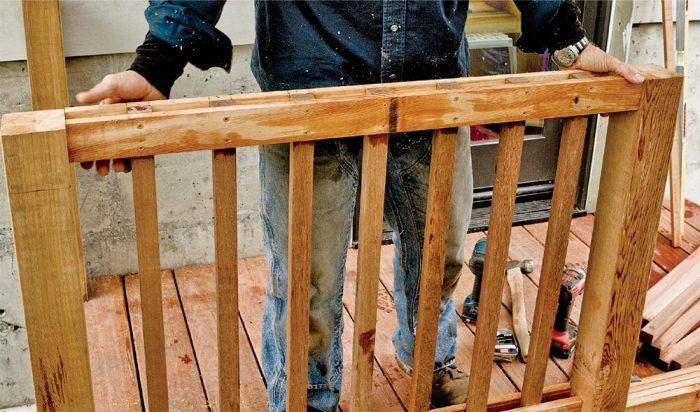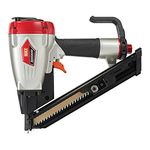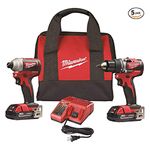Building and Installing a Site-Built Balustrade: Assembling the Balustrade
Use off-the-shelf hardwood balusters to complete the railing.

Establishing baluster spacing
Calculating the baluster spacing is not difficult, but it does require a little back and forth. Unless the spacing between all the posts is perfectly uniform, it’s best to calculate the baluster spacing for each run separately. Typically, your eye will not pick up small differences in spacing from one run to the next but will immediately identify one space that is not the same as the rest in the run. To calculate the spacing, begin by measuring the distance between the posts (see photos below). To keep the measurements straight and to avoid error, it’s best to have a calculation sheet to write the measurements down on (see “Calculating the Baluster Spacing” below). To the distance between the posts add one baluster thickness.
 |
 |
Calculating the baluster spacing
Note that the final baluster-unit distance is what you use to lay out the balusters, but if you want to check the exact distance between the balusters, simply subtract the baluster thickness from the final baluster-unit distance. Quick Tip: Mike Guertin demonstrates an alternative way to easily lay out good-looking baluster spacing using a piece of elastic band as a measuring tool in this video. |
The maximum distance allowed between balusters by code is 4 in., so set two balusters down with a 4-in. gap between them and measure the space between the balusters plus one baluster thickness. This is the estimated baluster-unit distance. Now divide the overall distance by the unit distance to determine the number of units. In this case, the number is about 7-1/2. Round up to the next whole number and divide it back into the overall distance to get the final baluster-unit distance. In this case the baluster-unit distance is just over 5 in..
Assembling and securing the balustrade
To increase efficiency and avoid mistakes, make a story pole of baluster spacing and clamp it in place with the actual balusters. Transfer the baluster layout to the rails, making an X for each baluster. Unclamp the rails and transfer the layout up the rails’ inside faces. By code, the maximum allowable gap between the decking and the rail bottom is also 4 in. To establish the correct baluster length, place a 4-in. (or less) spacer on the deck. Measure to the top of the post for the overall baluster length. Cut all the balusters and place them according to the layout on a top and bottom rail on the deck surface.
Place the other top and bottom rails over the balusters, being careful to align the ends and the layout marks. To create a uniform assembly, mark the fastener location with a stop or marking jig at every baluster location. As it’s easy for the individual boards to shift before they are secure, use a square to flush the baluster bottoms and rail edges before predrilling the holes. Hold the assembly firmly while predrilling the holes. Check the assembly again for alignment and then drive the fasteners to secure the bottom part of the balustrade.
Rather than measuring for the fastener locations in the top rail, align the top rail next to the bottom rail you just secured and transfer the fastener locations with a Speed Square. Repeat the process of drilling pilot holes and driving fasteners to secure the balusters and top rails. Test-fit the assembled balustrade to make sure it fits properly before attaching it permanently.
To secure the balustrade at the top, first cut a short section of baluster and fasten it to the post in the center. At the bottom, cut the top of the block at an angle to shed water and prevent rot, and then attach it where the bottom rail meets the post. Slide the rail in from the side just above the blocks and then guide it down into place. Flush the top of the rail to the post top. If everything fits, you shouldn’t have to do more than some gentle tapping to persuade it into position. Finally, use fasteners to secure the rails to the blocks. Be careful with this process because the short blocks tend to split if you overdrive the fasteners or neglect to drill fastener pilot holes.
Photos: John Ross
Fine Homebuilding Recommended Products
Fine Homebuilding receives a commission for items purchased through links on this site, including Amazon Associates and other affiliate advertising programs.

MicroFoam Nitrile Coated Work Gloves

Metal Connector Nailer

Drill Driver/Impact Driver





























